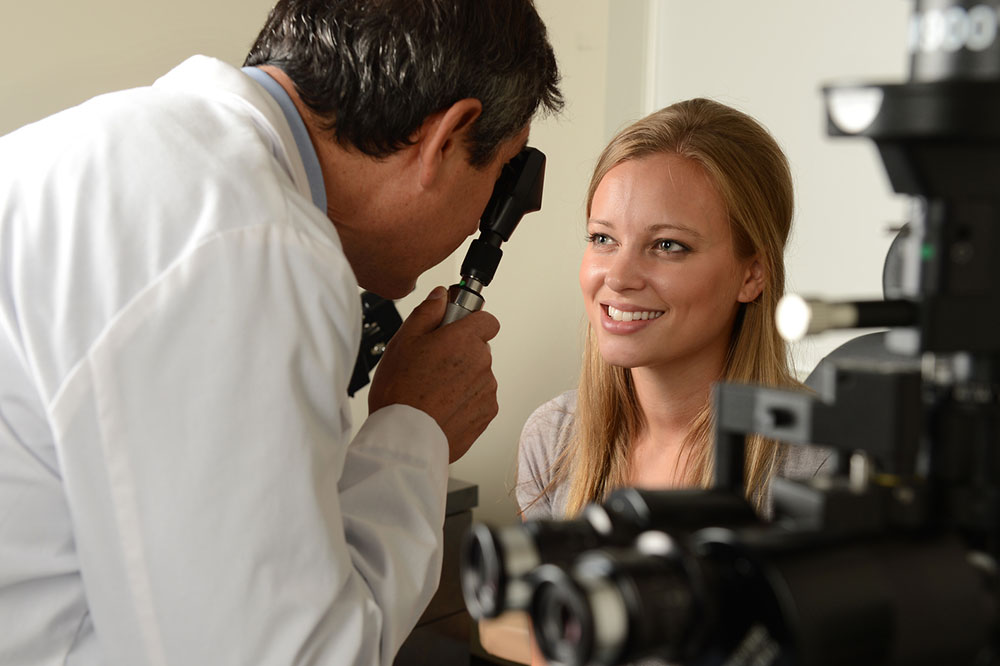Managing the Types of Age-related Macular Degeneration
The macula is responsible for central vision and color, and fine-detail vision. It can weaken as part of the natural aging process, leading to a severe condition known as age-related macular degeneration. It is common in people above 60, and the rate at which the macula gets damaged differs from case to case. The condition can occur in one or both eyes. Given below are treatments, causes, and risk factors for age-related macular degeneration.

What is age-related macular degeneration?
The macula can wear down as part of the natural aging process, and this process is known as age-related macular degeneration (AMD). One of the symptoms of AMD is blurry vision in the center of the eye. As it worsens, the person may develop blank spots in their central vision, and the objects they see may appear dull, unlike before. AMD rarely leads to blindness, but it can affect a person’s day-to-day activities like reading, writing, driving, and their ability to do basic chores.
Treatment of early-stage age-related macular degeneration
An ophthalmologist diagnoses the stage of your condition before beginning the treatment for macular degeneration. They determine the stage of the AMD based on the number of drusen under the retina and its size. If the drusen, which is yellow deposits of lipids and proteins, are medium-sized, about the width of a human hair, the doctors consider it early AMD. Patients may not feel any symptoms or face any vision loss. There is no specific treatment for early macular degeneration. However, doctors recommend periodic dilated eye examinations to see if the size or the number of drusen has increased and if the AMD has advanced. In case of certain poor lifestyle habits, doctors recommend cessation of the same and encourage individuals to have foods rich in Vitamin A to prevent vision loss.
Intermediate and late age-related macular degeneration
Intermediate AMD
If, during your eye examination, doctors find either large drusen or notice some pigment changes in your retina, or if they notice both these symptoms, they will diagnose it as intermediate AMD.
Late AMD
Along with the symptoms of large drusen and or pigment changes, if you are experiencing vision loss, doctors will classify it as intermediate AMD.
Late AMD is further classified into two types:
Geographic atrophy or dry AMD
When the macula’s light-sensitive cells and supporting tissues start breaking down gradually, it leads to vision loss.
Neovascular AMD or wet AMD
New abnormal blood vessels begin to form and grow under the retina, causing swelling in the macula. In this type of AMD, the damage to the macula is quick and severe.
Both wet and dry AMD may affect a person simultaneously. It is also possible that those diagnosed with early AMD might not progress to the next stage.
Treatment of intermediate and late age-related macular degeneration
The goal of late macular degeneration treatment is to slow its progression. Doctors prescribe remedies that are a combination of Vitamin E, zinc, copper, and beta-carotene. They may also recommend supplements and multivitamins if you are at risk of late AMD. If you have late AMD in one eye, you are also at risk of the condition in the other eye. It is important to undergo frequent screening as per the doctor’s advice to detect any symptoms early.
Treatment of advanced neovascular age-related macular degeneration
Since neovascular AMD advances quickly and rapidly, doctors are likely to consider multiple options to delay its progress. Macular degeneration may continue to progress despite the treatment. Given below are some options that doctors are likely to explore:
Injecting anti-vascular endothelial growth factor (VEGF) into the eye to stop the growth of abnormal blood vessels.
Photodynamic therapy can be used in an attempt to minimize vision loss.
Doctors use laser surgery in cases where the abnormal blood vessels are clustered together in a tight manner. This macular degeneration treatment procedure is not as effective if you have scattered vessels or if the blood vessels are in the central area of the macula.
Risk factors and causes for age-related macular degeneration
AMD usually occurs in people above 60, but younger patients have also been affected by the condition. Though drusen may not cause AMD, those with it are at a higher risk. Genetics also plays a part in the development of macular degeneration, and there is a history of it in your family; you too may be at risk. Doctors have identified certain genes that may be associated with the risk of the condition. Caucasians are also at a higher risk of developing AMD than other races.
The main cause of AMD is in its name. In the case of wet macular degeneration, it is caused by abnormal blood vessels leaking fluid or blood into the macula. Dry macular degeneration occurs due to various reasons, such as poor lifestyle habits, heredity, and environmental factors.
Diagnosing age-related macular degeneration
AMD does not manifest any early warning signs, and you may notice blurriness only after degeneration is advanced. Doctors dilate your eyes and use the following tests to diagnose if you have AMD and the stage you are at:
Visual acuity test
A retina exam
Amsler grid
Fluorescein angiogram
Optical coherence tomography




